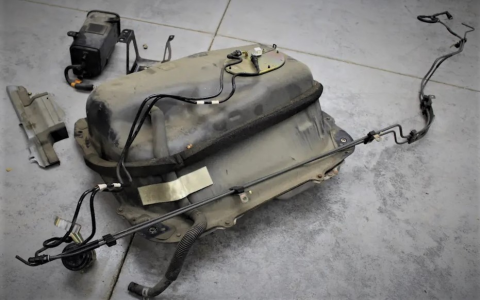Locating the correct fuel line diagram for your General Motors vehicle's mechanical fuel pump is crucial for proper installation or troubleshooting.
Understanding Fuel Line Diagrams
GM mechanical fuel pumps typically have three ports:
- Inlet Port: Connects to the fuel line from the tank or fuel filter (pre-filter).
- Outlet Port: Connects to the fuel line supplying the carburetor.
- Return/Vent Port: May connect to a return line to the tank or may be capped (varies significantly by model/year/engine).
Consult factory service manuals (FSM) for the precise diagram specific to your vehicle's year, make, model, and engine. Online forums dedicated to specific GM models/engines can sometimes help identify routing, but verify against reliable sources.

Cost of Replacement Lines & Hoses
Costs vary widely based on factors:
- Material:
- Rubber Hose (Low-Pressure Sections): $10 - $30 per foot.
- Stainless Steel Braided Hose: $25 - $60+ per foot.
- Pre-Bent Hard Line (Inlet/Outlet): $20 - $100+ per section.
- Nickel-Copper (NiCopp) Line (DIY bending): $20 - $50 for a coil.
- Source: OEM lines are typically more expensive ($75 - $250+ for kits) than universal or aftermarket.
- Length & Complexity: Longer runs or complex bends increase cost.
- Fittings: Necessary brass fittings ($3 - $15 each) add to the total.
Expect $50 - $300+ for materials, depending on how many lines/hoses need replacement and quality chosen.
Primary Fuel Line Types
- Low-Pressure Rubber Fuel Hose:
- Use: Pre-pump (tank to pump inlet), return lines (if applicable), vent lines.
- Specification: Must be SAE J30R9 or SAE 30R7 rated for gasoline. Avoid lower-rated heater hose.
- Features: Reinforced for low pressures (typically under 50 PSI), often cloth braid visible.
- High-Pressure Rubber Fuel Hose:
- Use: Pump outlet to carburetor (with mechanical pumps, usually lower pressure than EFI).
- Specification: Must be high-pressure hose rated at least 50 PSI working pressure (often SAE J30R7 or specific R9 grades). Reinforced.
- Pre-Bent Steel Fuel Lines:
- Use: Main feed line from tank to pump inlet (siphon prevention), pump outlet to carb.
- Features: Factory-correct bends and fittings, durable.
- Bend-Your-Own Tubing:
- Materials: Steel, Nickel-Copper (NiCopp) (highly recommended for ease of bending and corrosion resistance), Copper-Nickel alloy.
- Sizes: 5/16" OD common for feed, 1/4" or 5/16" for return.
- Stainless Steel Braided Hose (AN Fittings):
- Use: Performance/aftermarket applications, can replace any section (requires correct AN fittings).
- Features: Excellent durability and high-pressure rating, expensive. Ensure inner hose liner is compatible with gasoline (PTFE common).
Critical Selection Factor: Always match the line type and material specification to the location (inlet vs outlet), pressure requirement, and fuel compatibility. Avoid mixing incompatible hose types.

